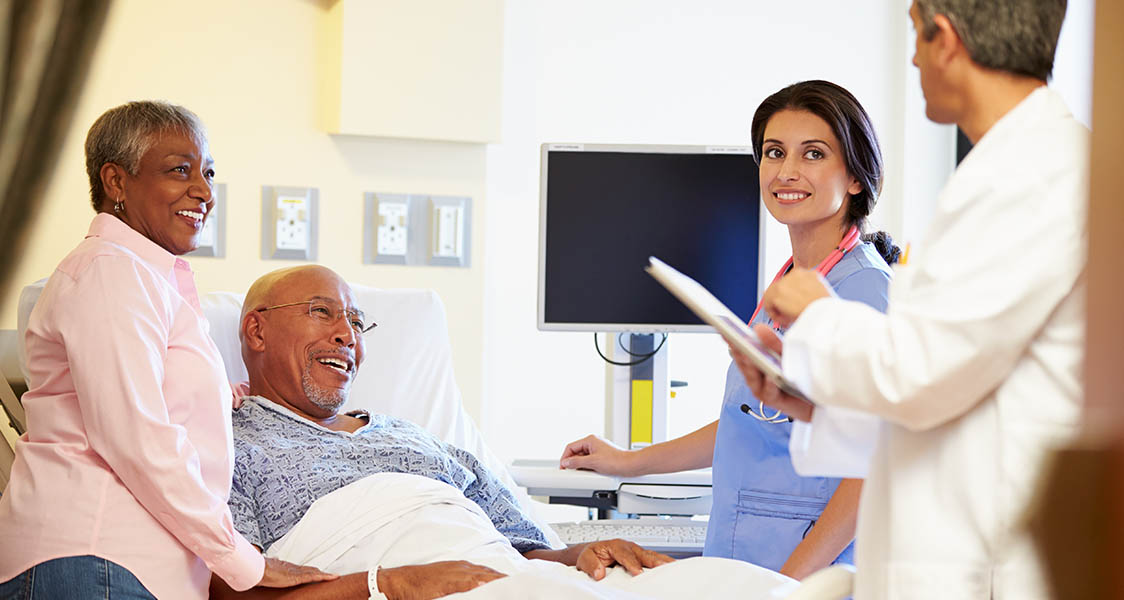Welcome to Knowledge Galaxy, where we provide thorough guidance on understanding and managing Stroke Recovery. Here, we explore key stages, strategies, and long-term care that empower individuals and their loved ones to regain well-being following a stroke.
A stroke is a medical emergency requiring swift treatment. But what happens in the days, weeks, and months following a stroke? Knowledge Galaxy explores the stroke recovery timeline to help you understand the process.
Read More: Wearable Medical Devices

Day 1: Initial Treatment
After experiencing a stroke, you’ll likely be admitted to an emergency department. Doctors will stabilize your condition and determine the stroke type. If it’s an ischemic stroke (caused by a blood clot), timely treatment with clot-busting medication can reduce long-term effects. Depending on the stroke’s severity, you may need intensive or acute care.
Rehabilitation should begin as soon as possible after the stroke’s cause is treated. At leading facilities, rehabilitation starts around 24 hours after a stroke, involving a multidisciplinary team of physiatrists, neurologists, therapists, speech-language pathologists, and nurses.
First Few Weeks After a Stroke
The typical hospital stay after a stroke is five to seven days. During this time, the stroke care team will evaluate the stroke’s effects and determine the rehabilitation plan. Long-term effects vary but may include cognitive, physical, and emotional symptoms, as well as fatigue and sleep trouble.
Various therapies help determine the affected brain areas and jump-start recovery:
- Physical and occupational therapy
- Speech-language therapy
- Rehabilitation psychologists and neuropsychologists to address cognitive and emotional impacts
Stroke Rehabilitation Priorities
Activities of daily living (ADL) become the focus of rehabilitation after a stroke. Work with your care team to set recovery goals that include important activities. While therapy is crucial, personal practice is equally important.
Leaving the Hospital After a Stroke
Your care team will create a discharge plan based on your level of functional impairment. You might continue rehabilitation in one of the following settings:
- Inpatient rehabilitation unit or independent rehabilitation facility
- Subacute rehabilitation facility
- At home with outpatient rehabilitation clinic visits
1–3 Months Post-Stroke
The first three months are critical for recovery. Most patients will complete an inpatient rehabilitation program or make progress in outpatient therapy. The goal is to restore function to pre-stroke levels or develop compensation strategies.
During this period, some patients may experience spontaneous recovery, where lost abilities suddenly return. However, setbacks like pneumonia, heart attacks, or secondary strokes can also occur. Adjust rehabilitation goals with your care team as needed.
Exploring New Treatments
Researchers continuously develop new treatments to enhance traditional therapies. Innovations include:
- Noninvasive brain stimulation (NIBS)
- New treatments for spasticity and muscle stiffness
- Technology-assisted rehabilitation
Supporting Your Recovery After a Stroke
Upon discharge, your healthcare team will create a home recovery plan, which may include:
- Physiotherapy and exercises
- Cognitive behavioral therapy (CBT)
- Cognitive rehabilitation
- Speech, swallowing, and vision exercises
- Bowel or bladder management
You can choose to do your rehabilitation in person or online (telerehabilitation). Your healthcare team will ensure you have the necessary equipment and support.
After about six months, you should have a progress review. If not, discuss this with your team.
Stroke recovery is a complex journey, but understanding the timeline and available resources can help you navigate the process effectively.
How to Recover from Stroke Quickly
Recovering from a stroke requires a blend of patience, proper care, and focused rehabilitation. Here are essential steps to boost your recovery pace:
- Seek Immediate Medical Care: Early intervention can prevent further brain damage.
- Engage in Physical Therapy: Regular therapy sessions can help improve strength, coordination, and mobility.
- Adopt a Healthy Diet: Consuming nutrient-dense foods aids brain healing.
- Participate in Occupational Therapy: This aids in regaining independence in daily activities.
- Mental Health Support: Addressing emotional well-being can significantly impact overall recovery.
Brain Stroke Recovery Chances
Recovery outcomes vary depending on factors such as stroke severity, response time, and overall health. Generally:
- Ischemic Stroke patients have a higher chance of recovery than hemorrhagic stroke survivors, given timely treatment.
- Early Rehabilitation: Starting therapy within days of the stroke can enhance recovery chances.
- Age and Pre-existing Health: Younger individuals and those in good health typically recover faster.
Mild Stroke Recovery Stages
Mild strokes, also known as Transient Ischemic Attacks (TIA), often have quicker recovery phases:
- Stage 1 – Acute Recovery: Occurs in the first few weeks; focuses on stabilizing vital functions.
- Stage 2 – Intermediate Recovery: Physical therapy begins, and patients start relearning basic movements.
- Stage 3 – Long-term Rehabilitation: Fine-tuning motor skills, speech, and cognitive functions.

Signs of Impending Death After Stroke
In severe cases, signs that may indicate life is nearing an end include:
- Decreased Responsiveness: Limited or no response to stimuli.
- Shallow or Irregular Breathing: Labored breathing or prolonged pauses.
- Loss of Appetite: Refusal or inability to eat.
- Skin Discoloration: Purple or bluish patches on limbs.
- Physical Weakness: Significant loss of muscle strength.
If these signs appear, it’s essential to provide comfort and involve palliative care experts.
3 Stages of Stroke Recovery
The three main stages of stroke recovery are foundational for understanding patient progress:
- Stage 1: Acute Phase: Occurs immediately post-stroke, focusing on survival and stabilization.
- Stage 2: Rehabilitation Phase: Lasts for several weeks to months, emphasizing physical and cognitive therapies.
- Stage 3: Reintegration Phase: Focuses on adapting to daily life, enhancing independence, and possibly returning to work.
Signs of Recovery from Stroke
Signs that a patient is recovering include:
- Improved Mobility: Ability to walk or move independently.
- Enhanced Speech: Clearer and more coherent speech.
- Cognitive Improvement: Memory, problem-solving, and attention improvements.
- Positive Emotional Changes: Reduced depression or anxiety, increased optimism.
Brain Exercises for Stroke Recovery
Brain exercises support cognitive health, critical for stroke recovery. Recommended exercises include:
- Memory Games: Puzzles or card-matching games enhance recall.
- Problem-solving Tasks: Sudoku or crosswords stimulate cognitive abilities.
- Coordination Exercises: Hand-eye coordination games like ball tossing.
- Language Activities: Practicing speech or learning new words aids in language recovery.
- Mindfulness and Meditation: Helps manage stress and improve focus.
Stroke Recovery After 2 Years
Two years post-stroke, the brain and body may continue to show signs of recovery. In this phase:
- Ongoing Rehabilitation: Focuses on refining and maintaining regained abilities.
- Adaptive Techniques: Patients may use assistive devices for improved functionality.
- Cognitive Maintenance: Continuous brain-stimulating exercises prevent regression.
- Lifestyle Adaptations: Emphasis on heart health, blood pressure control, and regular exercise.
Conclusion:
Recovering from a stroke is a multifaceted journey that involves physical, cognitive, and emotional aspects. With timely care, consistent therapy, and lifestyle modifications, many individuals regain significant independence and quality of life. Knowledge Galaxy encourages stroke survivors and their families to stay resilient, seek support, and embrace the healing process.
Read More: Stroke Recovery
FAQs:
What are the first steps in stroke recovery?
Early medical intervention, followed by physical and occupational therapy, is essential.
Can full recovery happen after a stroke?
It depends on the stroke’s severity and how soon therapy begins, but many achieve a high level of recovery.
How long does stroke recovery usually take?
Recovery varies; it may range from weeks to years, depending on individual factors.
What are mild stroke symptoms?
Mild strokes often present temporary weakness, dizziness, or numbness that resolves quickly.
Are memory problems normal after a stroke?
Yes, memory issues are common, and brain exercises can assist in improvement.
How does age affect stroke recovery?
Younger patients typically recover faster due to better brain plasticity.
How does speech therapy help?
Speech therapy can rebuild communication skills and improve cognitive functions.
What role does diet play in stroke recovery?
A balanced diet promotes healing by supplying essential nutrients for brain repair.
How often should physical therapy be done?
Therapists recommend frequent sessions, often daily, especially in early recovery.

What is a TIA, and is it serious?
A TIA is a temporary mini-stroke; though brief, it signals risk for future strokes.
Can stress hinder stroke recovery?
Yes, stress can slow progress; relaxation techniques are recommended.
How long do stroke-related mobility issues last?
Mobility challenges vary but can improve with consistent physical therapy.
Can stroke recovery continue years later?
Yes, with ongoing exercises and therapy, recovery can progress even years post-stroke.
What is neuroplasticity in stroke recovery?
Neuroplasticity refers to the brain’s ability to reorganize and form new connections, aiding recovery.
Is there a way to predict stroke recovery success?
Initial health, stroke severity, and response time impact recovery chances.
What are warning signs of another stroke?
Sudden weakness, confusion, and severe headache can be warning signs.
Can stroke survivors drive again?
Many can drive after assessments; medical clearance is usually required.
How does occupational therapy support recovery?
It helps survivors regain independence in daily activities.
Can lifestyle changes reduce the risk of a second stroke?
Yes, a healthy diet, exercise, and quitting smoking reduce the risk.
Is counseling helpful for stroke survivors?
Absolutely, as it helps manage emotional challenges associated with recovery.






